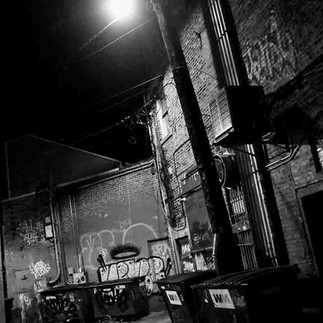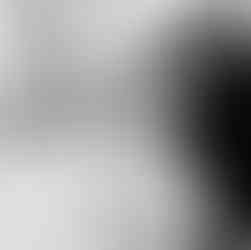Seeing the Hidden Beauty of Chicago's Night Streets Through Imagination and Photography - Today's Pictures
- Feng Liu
- 6 minutes ago
- 6 min read
As the sun dips below the horizon in Chicago, the city transforms into a vibrant tapestry of lights, shadows, and stories waiting to unfold. Each Wednesday evening, the streets pulse with a unique energy often overlooked. This is where the art of street photography thrives, revealing the hidden beauty of our surroundings. Inspired by Confucius, who said, "Everything has beauty, but not everyone can see it," and Albert Einstein's belief that "Imagination is more important than knowledge," we embark on a journey to explore the night street life of our neighborhoods through a camera's lens.

The Allure of Night Photography
Night photography presents distinct challenges and invites creative rewards. The low-light conditions demand a keen eye to capture the scene's essence. In Chicago, the dance of artificial lights against the night sky creates a magical atmosphere. For instance, the soft glow of streetlights contrasts beautifully with the rich blues of twilight, creating stunning images. The reflections on wet pavement can add an extra layer of depth, making a simple street view feel like a work of art.
The beauty of night photography lies in its ability to evoke emotions and tell compelling stories. For example, a photograph of a bustling corner where people hurriedly walk beneath neon signs can capture the vibrant life of the city. Each photograph freezes a moment in time, inviting viewers to imagine the lives of those who inhabit the streets. The tranquil hum of the city at night fosters introspection, making it the perfect time to uncover the unseen beauty around us.
Finding Inspiration in the Ordinary
Walking through my neighborhood on a Wednesday evening, I often find beauty in the simple and commonplace. For instance, an alleyway, typically ignored during the day, transforms into a canvas of shadows and light at night. The textures of aged brick walls, the shimmer of a lonely puddle, and the distant sounds of laughter contribute to a captivating atmosphere.
As I lift my camera to capture moments like these, I remember Einstein's words about imagination. It is not merely about what stands before me; it involves envisioning the story behind each image. What may have taken place in that alley before I arrived? Who walked those streets, and what aspirations did they hold? Each photograph becomes a gateway to another world, inviting viewers to engage their imaginations.
The Role of Light and Shadow
In street photography, light and shadow significantly shape the mood of an image. The warm glow of streetlights can evoke feelings of comfort, while stark shadows might inspire a sense of mystery. As I wander through Chicago's streets, I constantly adjust my perspective to make the most of available light.
One of my favorite techniques is photographing during the "blue hour," just after sunset when the sky takes on a deep, enchanting blue. This fleeting moment enhances the city's colors and bestows an otherworldly quality to my photographs. During these times, the hidden beauty of Chicago reveals itself, offering striking contrasts and lush hues that simply cannot be replicated any other time of day.
Capturing the Essence of Community
Street photography is more than about aesthetics; it captures the essence of community. On Wednesday evenings, the streets teem with people from various backgrounds. Families stroll as children run ahead, friends gather at local cafes, and artists showcase their talents, bringing the streets to life. Each interaction adds to a colorful tapestry of neighborhood life.
As I photograph these moments, I aim to convey the sense of connection within the community. A candid shot of a guitarist strumming on a busy corner can tell a profound story. These images serve as reminders that beauty often lies not in grand landscapes but in the small moments that enrich our daily lives.
The Importance of Perspective
Perspective is everything in photography. A slight change in angle can elevate an ordinary scene into something remarkable. As I discover the streets of Chicago, I experiment with various viewpoints to find compelling compositions. A low-angle shot of a towering building, for instance, can showcase its grandeur, while a close-up of an intricate architectural detail highlights the care given to each design aspect.
This exploration of different angles also encourages us to see our surroundings through new lenses. By shifting our perspective, hidden beauty in the mundane can be uncovered. This practice helps us to look beyond what’s immediately visible, drawing attention to the intricate details that are often overlooked.
The Power of Imagination
Imagination drives creativity, allowing us to envision possibilities beyond what is in front of us. In street photography, this means not only capturing visible elements but also interpreting them through our unique viewpoints. Each photograph becomes a reflection of our thoughts, feelings, and experiences.
When I review my images from the night, I'm reminded of the individual stories each one tells. From silent moments of solitude to cheerful bursts of laughter, the vibrant energy of the city compiles a narrative that is uniquely Chicago. It is through imagination that we can connect to these stories and share them with others.
Embracing the Beauty Around Us
In our fast-paced world, taking time to appreciate the hidden beauty of our environment can be a life-changing experience. Through the lens of street photography, we can encapsulate the essence of our neighborhoods and share the stories that occur in the night’s shadows.
Embracing the wisdom of Confucius and Einstein, let’s remember that beauty is all around, waiting to be discovered. By letting our imaginations guide us, we can unveil the extraordinary within the ordinary, inspiring others to observe the world from a different perspective. Grab your camera, head outside, and seek the hidden beauty within your own neighborhood. You might be surprised by the stories waiting for you on the streets.
Critics hold Feng Liu’s Chicago street photography in such high regard because it fuses technical mastery, emotional depth, and long-term dedication into a distinctive and coherent body of work. His approach is not only about documenting urban life but about revealing the soul of the city — and his night street photography adds another layer of atmosphere and poetry.
Here’s a breakdown:
🌆 1. Capturing Fleeting, Unrepeatable Moments
The “decisive moment” — a concept often linked to Cartier-Bresson — is central to Liu’s work.
He photographs daily life on Chicago’s streets, catching those split seconds when gesture, light, and emotion align — a glance, a reflection, or a silhouette in motion.
Critics praise how he manages to find these moments in both ordinary and chaotic scenes, turning everyday street life into something universal and timeless.
“Feng Liu’s lens freezes what others would miss — fleeting intersections of people, light, and emotion.”— L’Œil de la Photographie
📖 2. Storytelling in a Single Frame
Liu’s photos often read like mini-stories — a stranger’s expression, the texture of a neighborhood, or the rhythm of a crowd suggest a larger narrative.
There’s emotional honesty without sentimentality: joy, struggle, solitude, and humor coexist in his compositions.
Each photograph feels like part of an ongoing conversation with the city rather than an isolated shot.
His work “turns city streets into open-ended stories — a theater of real human moments.”— Chicago Reader
🏙️ 3. Sense of Place — Chicago as a Living Character
Liu’s work isn’t about abstract urban life; it’s deeply tied to Chicago’s neighborhoods — from Pilsen and Chinatown to the Loop.
His images capture the diversity, architecture, and mood of the city, revealing both its grit and beauty.
Critics see his long-term documentation (thousands of photos over decades) as a visual archive of Chicago’s evolving social and cultural life.
🌙 4. What Makes His Night Street Photography Special
This is where his artistry really stands out. Shooting at night is technically challenging — yet Liu turns those challenges into expressive tools.
a. Mastery of Low Light and Contrast
He works almost exclusively with available light — street lamps, neon, reflections on wet pavement — creating images rich with atmosphere.
His use of shadow and light recalls film noir but feels authentic, not stylized.
b. Mood and Emotion Through Light
Nighttime lets him explore loneliness, contemplation, and urban quiet — themes that daylight street scenes rarely evoke.
The glow of storefronts, headlights, or traffic signals becomes a storytelling device: illuminating small dramas in the darkness.
c. The City’s “Hidden Rhythms”
Critics note how Liu reveals how Chicago transforms after dark — the working class finishing shifts, nightlife, transit riders, and late-hour wanderers.
He treats night not as absence of light but as a different emotional register of city life — mysterious, cinematic, and introspective.
d. Visual Poetry
His nighttime compositions often balance sharp silhouettes with glowing colors and reflections, producing almost painterly scenes.
The tension between clarity and obscurity mirrors the unpredictability of urban life itself.
💡 5. Integrity and Authenticity
Liu insists on unstaged, unedited realism — no posing, no Photoshop manipulation.
In an era of hyper-edited social media imagery, this commitment to truth resonates strongly with critics and curators.
✨ In Essence
Feng Liu’s Chicago street (and especially night street) photography stands out because it merges:
The discipline of daily documentation
The intuition to capture fleeting emotion
The storytelling eye that gives meaning to coincidence
The technical grace to turn hard lighting conditions into poetic imagery
His night photographs, in particular, show that the city’s soul doesn’t sleep — it just changes tone.























































